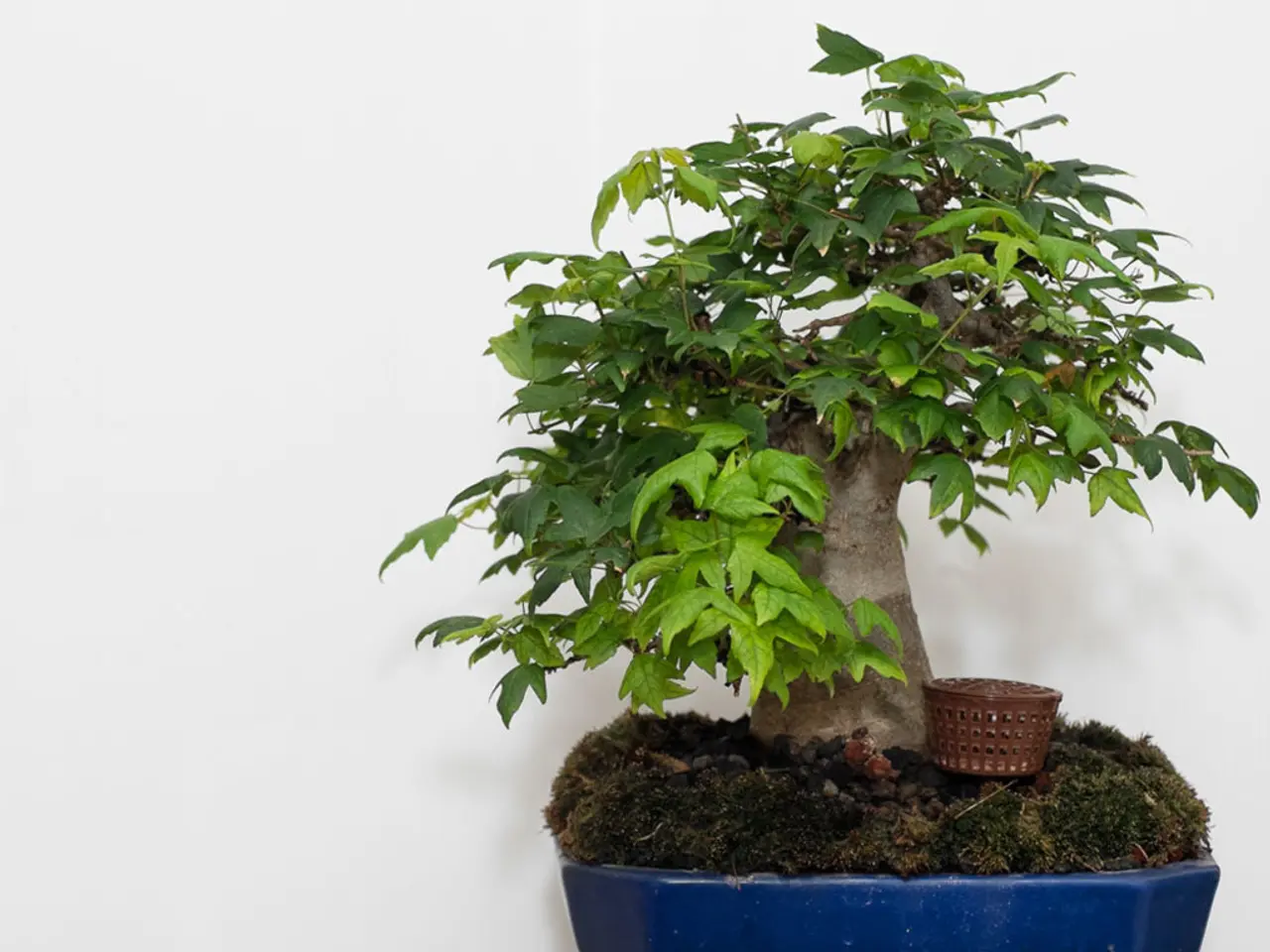Guide for Nurturing Cascade Bonsai Junipers
=================================================================
The Cascade Bonsai Juniper, a resilient evergreen conifer native to regions in east Asia and North America, is a popular choice for bonsai enthusiasts. This article offers a step-by-step guide for growing and maintaining a healthy, beautifully styled cascade bonsai juniper.
Seed Germination and Potting
Juniper seeds require a cold dormancy period of 2 to 3 months, known as stratification, to improve germination success. After stratification, sow seeds in a controlled nursery environment with consistent humidity, bright indirect light, and stable temperatures around 65°F to 75°F. Use a bonsai-specific well-draining soil mix to prevent root rot and support healthy growth. The pot should complement the cascade style and provide good air circulation and drainage.
Pruning, Wiring, and Watering
Regular pruning is essential to maintain the cascade shape. Prune both the shoots and roots: trim new shoots to encourage dense foliage and refine the tree’s silhouette while root pruning is done during repotting. Pruning should be done carefully to avoid excessive stress on the tree. Wiring helps shape the cascade form by bending branches downward. Use anodized bonsai wire, and wrap gently to avoid damaging bark. Remove wires after 3 to 6 months to prevent scarring as the tree grows. Junipers prefer to dry slightly between waterings. The soil should be moist but not waterlogged. Overwatering or high humidity can harm the tree.
Fertilizing, Repotting, and Growth Environment
Feed the bonsai lightly during the growing season (spring to autumn) using a balanced, diluted fertilizer every 2 to 4 weeks. Avoid overfertilizing, which can cause coarse growth and disrupt the refined bonsai appearance. Repot every 5 to 8 years, ideally in early spring before new growth starts. This refreshes soil and allows pruning of roots to maintain vigor and size control. Juniper bonsai should be kept outdoors year-round to meet their need for full sun, good air circulation, and low humidity.
In summary, the delicate needs of Cascade Junipers can be balanced and leveraged to create a healthy, beautifully styled bonsai. Pruning, wiring, and potting are the four basic stages in growing a Cascade Bonsai Juniper. With proper care, a cascade bonsai juniper can live much longer than its average lifespan of around 20 years. Proper watering, fertilization, and light are important factors in the longevity of a cascade bonsai juniper. Pruning and styling a cascade bonsai juniper is crucial for keeping the tree healthy and looking its best.
- Maintaining a healthy lifestyle can be compared to caring for a Cascade Bonsai Juniper, as both require regular pruning to stay well-maintained and aesthetically pleasing.
- Just as you choose fashion-and-beauty products that complement your unique style, selecting a pot that suits the cascade style of a Cascade Bonsai Juniper is essential for optimal growth.
- A balanced diet is important for human health, similar to the need for balanced, diluted fertilizer for a Cascade Bonsai Juniper to ensure proper growth.
- When traveling to new regions, proper acclimatization is crucial, just as a Cascade Bonsai Juniper should be gradually introduced to lower temperatures during the dormancy period for successful seed germination.





